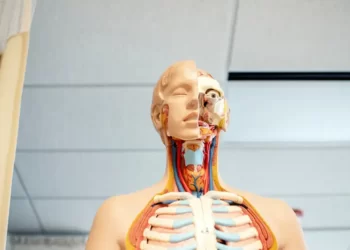Table of Contents
- The Historical Context of the Idealised Body
- The Emergence of Plastic Surgery
- The Role of Media and Popular Culture
- The Body as a Project: A Sociological Perspective
- Gender and Plastic Surgery
- Class, Race, and Plastic Surgery
- The Impact on Identity and Self-Perception
- Ethical Considerations and Social Implications
- Conclusion: Challenging the Idealised Body
Plastic surgery is a cultural phenomenon that lies at the intersection of aesthetics, health, and societal ideals. It embodies modern desires for self-improvement, conformity, and even rebellion, revealing the complex relationship between individuals and the socially constructed notion of the “ideal” body. Through the lens of sociology, plastic surgery is much more than a series of physical alterations; it is a reflection of deeper cultural narratives, power dynamics, and the continual reshaping of identity. This article examines the sociological implications of plastic surgery and how it relates to our evolving perception of the idealised body.
The Historical Context of the Idealised Body
To understand the modern phenomenon of plastic surgery, we must first consider how the concept of the ideal body has evolved over time. Throughout history, bodily ideals have been shaped by social, economic, and cultural influences. In classical Greece, an athletic and proportionate physique symbolised virtue and perfection, serving as the standard for beauty. During the Renaissance, a fuller and voluptuous body became a marker of wealth and fertility, particularly for women.
As societies modernised, body ideals shifted again. The Industrial Revolution and the rise of consumer culture significantly changed how individuals saw their bodies. By the 20th century, mass media, including magazines, film, and television, began to play a central role in spreading narrow definitions of beauty. The rise of the slender body as the feminine ideal in the 1960s and the athletic, muscular male body as a signifier of masculinity are examples of how cultural norms continuously shape the bodily ideals that individuals aspire to achieve. These ideals have not remained static; they evolve in tandem with changing economic structures, media representations, and technological advancements.
The Emergence of Plastic Surgery
Plastic surgery gained traction during the 20th century, particularly after World War I, when reconstructive surgery became necessary for soldiers with debilitating injuries. The medical advancements in reconstructive techniques eventually found applications in cosmetic surgery, leading to the growth of the plastic surgery industry. This transition highlights an important sociological point: the medicalisation of beauty.
Cosmetic surgery, which once had a medical basis in reconstructive procedures, has since become a means of achieving societal ideals of physical perfection. The transformation of surgery from a medical necessity to a consumer choice reflects larger societal forces at play, such as consumerism, individualisation, and the commodification of the body. Plastic surgery is now a consumer product, marketed through social media, endorsed by celebrities, and pursued as a means to attain idealised standards of beauty.
The Role of Media and Popular Culture
The media has played a profound role in shaping the modern discourse around plastic surgery. Popular culture, reinforced by social media platforms such as Instagram and TikTok, has created an environment in which individuals are continuously exposed to highly edited and filtered images of seemingly flawless bodies. The phenomenon of “Instagram Face,” a homogeneous look characterized by plump lips, high cheekbones, and smooth skin, has set a new standard for beauty that many aspire to achieve.
Reality television shows like “Botched” or “Keeping Up with the Kardashians” have also contributed to the normalisation of cosmetic surgery. The idea that physical transformation is achievable, even desirable, has been embedded within the cultural psyche. The accessibility of these transformations, juxtaposed with their glorification in popular media, creates a powerful feedback loop that drives both the demand for and the acceptability of plastic surgery. For many individuals, plastic surgery is viewed not only as a route to personal satisfaction but also as a way to attain social validation.
The media’s representation of beauty has therefore created a cultural script where plastic surgery becomes a legitimate and logical step toward achieving the body ideal. This desire for an idealised body, in turn, reinforces the values of conformity, appearance-based self-worth, and the notion that bodies are malleable entities that can be perfected.
The Body as a Project: A Sociological Perspective
Plastic surgery can be understood through the concept of “body projects,” a term coined by sociologist Chris Shilling. The notion of the body as a project suggests that individuals actively work on their bodies to align them with social expectations and personal aspirations. This perspective is deeply rooted in individualisation, where personal identity is constructed through choices that are often influenced by societal standards.
Plastic surgery as a body project reveals the interplay between agency and structure. On one hand, individuals perceive themselves as exercising autonomy over their bodies, making choices that will improve their self-esteem or social standing. On the other hand, these choices are deeply influenced by societal pressures, media portrayals, and beauty standards that limit what is seen as desirable or acceptable.
The body project also points to the growing commodification of the self. As plastic surgery becomes more accessible, it reinforces the idea that our bodies are never “finished” and can always be upgraded, similar to consumer goods. This commodification turns the body into a lifelong project of self-optimisation, where imperfections are seen as flaws that must be corrected to achieve social acceptance.
Gender and Plastic Surgery
Plastic surgery is a gendered practice, with women making up the majority of cosmetic surgery patients. The gendered nature of plastic surgery reflects broader social inequalities and expectations placed upon women. Historically, women have been subject to higher levels of scrutiny regarding their appearance, and this pressure has been amplified in the contemporary era through media and consumer culture.
For women, plastic surgery is often linked to maintaining youth, attractiveness, and femininity. Procedures like breast augmentation, liposuction, and facelifts are commonly marketed as means to restore or enhance what is perceived as feminine beauty. This emphasis on youthfulness and the elimination of natural signs of ageing speaks to a deeper societal discomfort with the ageing female body and the devaluation of women as they grow older.








